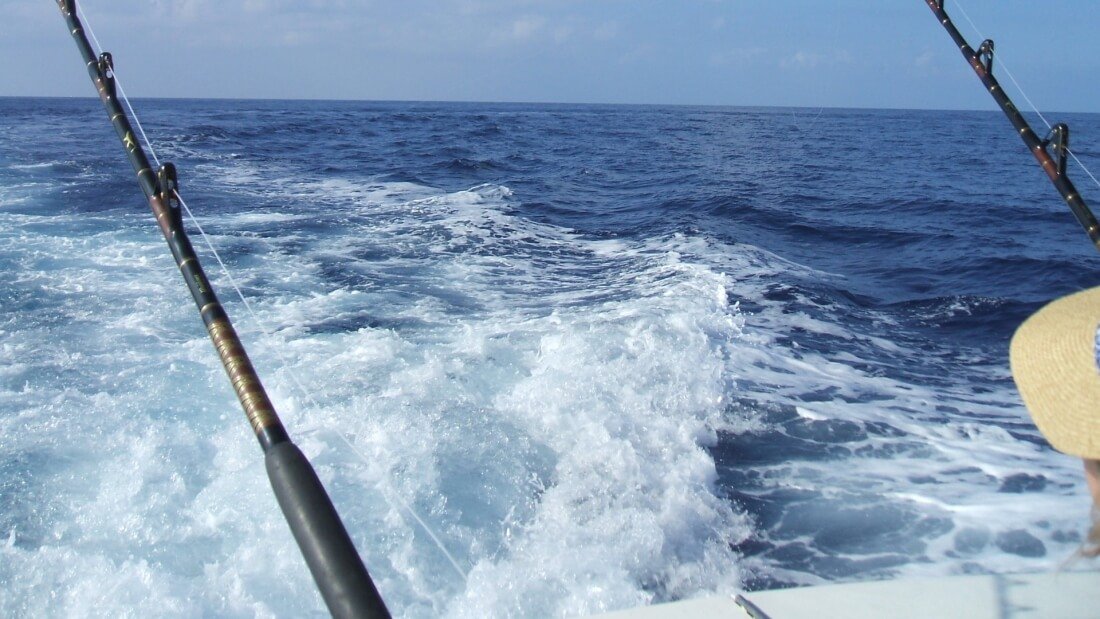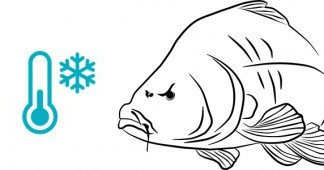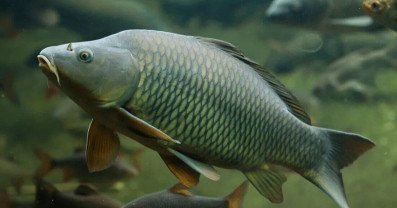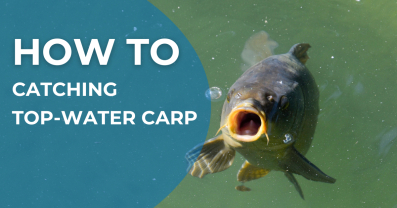Fastest fish in the ocean: Black marlin
When it comes to the speed of ocean-dwelling species, one name resonates with awe and fascination: the black marlin. Renowned as the fastest fish in the ocean, the black marlin's extraordinary capabilities have captivated enthusiasts and anglers worldwide. In this comprehensive article, we'll delve into the fascinating world of the black marlin, offering insights into its physical attributes, habitat, dietary habits, factors contributing to its remarkable speed, and effective fishing techniques to catch this remarkable species.
What is the Black Marlin?
The Black Marlin, scientifically known as Istiompax indica, is a magnificent and highly sought-after fish species that inhabits the world's oceans. With its remarkable size, impressive strength, and striking appearance, the Black Marlin has captivated the interest of anglers and fishing enthusiasts worldwide. In this article, we will delve into the fascinating characteristics, habitat, and behavior of the Black Marlin.
Meet the Black Marlin
Scientifically known as Istiompax indica, the Black Marlin is an awe-inspiring and highly coveted fish that roams the vast expanses of our world's oceans. Its imposing size, incredible strength, and striking appearance have made it a sought-after subject of fascination for those passionate about marine life. Within this article, we'll embark on an exploration of this magnificent creature, delving into its distinctive characteristics, favored habitat, and notable behavior.
The Need for Speed and Agility
The black marlin has etched its name in history as one of the fastest inhabitants of the ocean. Its impressive traits contributing to this distinction include:
- Blistering Speed: The black marlin effortlessly surges through the water, frequently exceeding speeds of 68 miles per hour (110 kilometers per hour). Its streamlined physique, potent muscles, and crescent-shaped tail collectively enable it to generate substantial thrust and propel itself with astonishing velocity.
- Agile Swimmer: Engineered for agility, the black marlin possesses a sleek, torpedo-like body that minimizes resistance and facilitates swift maneuvers. With its elongated form and robust pectoral fins, it maintains superior stability and control, enabling quick changes in direction and rapid acceleration.
- Muscular Tail: Dominated by a muscular tail, known as the caudal fin, the black marlin harnesses this feature as its primary propeller for high-speed swimming. The crescent shape of the caudal fin allows the fish to produce powerful thrust by sweeping it from side to side, granting the marlin the ability to dart forward or execute nimble turns with ease.
- Efficient Oxygen Utilization: The black marlin boasts an efficient respiratory system tailored to its high-speed lifestyle. Specialized gills adeptly extract oxygen from the water, providing the oxygenation required to support its energy-intensive activities. This efficient oxygen utilization bolsters its endurance and enhances overall agility.
- Hunting Expertise: The marlin's speed and agility are crucial in its hunting strategies. When pursuing prey such as smaller fish or squid, it can execute rapid accelerations to surprise and seize its quarry. Its agility aids in navigating through schools of fish or circumventing obstacles, ensuring successful hunts.
In summary, the black marlin's extraordinary attributes, including its exceptional speed, agility, streamlined body, muscular tail, and efficient oxygen utilization, combine to create a remarkable swimmer that thrives in the marine environment, establishing itself as a formidable ocean predator.
Habitat and Range
The Black Marlin predominantly inhabits the tropical and subtropical regions of the Pacific and Indian Oceans. It favors warm waters with temperatures ranging between 70°F and 85°F. This species occupies a diverse range of locations, including offshore and nearshore waters, coral reefs, drop-offs, and deep-sea canyons. Unlike coastal species, the Black Marlin is pelagic, choosing to reside mainly in the open ocean.
Adaptations and Physical Features
Streamlined for Speed
Black marlins have evolved a sleek, streamlined body shape that enables them to glide through water with remarkable ease. This elongated form allows them to achieve impressive velocities when pursuing prey or evading potential threats, minimizing resistance and optimizing their hunting prowess.
Stunning Size and Weight
One of the most striking aspects of black marlins is their sheer size and weight. Males typically reach lengths of 10 to 15 feet and weigh up to 1,500 pounds, while females often surpass 15 feet in length and exceed 2,000 pounds. This impressive stature makes black marlins among the largest bony fish species in the world.
Predatory Bill
Equipped with a formidable bill, or rostrum, the black marlin's upper jaw extends into a sharp, spear-like feature. This elongated bill serves primarily for hunting, allowing the marlin to stun or impale its prey, making capture and consumption more efficient. Additionally, it acts as a defensive tool against potential threats.
Camouflage and Coloration
Contrary to their name, black marlins do not have an entirely black appearance. Their bodies sport a striking dark blue hue on top and silver-white on the bottom, a coloration strategy known as countershading. This adaptation aids in blending seamlessly into their environment, rendering them less visible to predators from above and prey from below.

Image by inksyndromeartwork on Freepik
Catching the Ocean's Speedster
Interested in pursuing the fastest fish in the ocean? Follow these guidelines:
Selecting the Ideal Location
Locating the right fishing spot is paramount when targeting black marlins. Consider these factors:
- Water Temperature: Black marlins prefer warm waters within the range of 70 to 80 degrees Fahrenheit (21 to 27 degrees Celsius).
- Currents and Upwellings: Seek areas where warm and cold currents intersect, creating upwellings that attract baitfish, a primary food source for black marlin.
- Underwater Structures: Black marlins frequently populate areas close to underwater structures such as reefs, seamounts, and drop-offs. These structures offer them a favorable hunting ground.

Effective Techniques for Black Marlin Fishing
- Trolling: Trolling with large skirted lures or rigged baits is a well-known technique for targeting black marlins. Vary the trolling speed and direction to mimic the movement of live bait.
- Live Baiting: Utilizing live bait is a highly effective method for enticing black marlins. Deploy live bonito, mackerel, or squid at different depths to attract these apex predators.
- Switch Baiting: This method involves presenting a hooked baitfish to a black marlin while simultaneously luring it with a teaser bait. When the marlin strikes the teaser, swiftly switch it with the hooked bait.
- Drifting with Baits: Drifting allows you to cover a broader area while presenting baits at varying depths. Employ a combination of live and dead baits to entice black marlin.
Pro Tips for Successful Black Marlin Fishing
- Timing: Black marlin tend to be more active during dawn and dusk. Plan your fishing trips accordingly to maximize your chances of encountering these magnificent creatures.
- Patience: Patience is key when targeting black marlins. Be prepared for extended waiting periods and maintain your focus to detect even the subtlest signs of a strike.
- Observation: Keep a keen eye on the water's surface for indicators of marlin activity, such as baitfish leaping or birds diving. These cues can lead you to productive fishing spots.
- Fight Management: Once you've hooked a black marlin, it's essential to manage the fight properly. Avoid applying excessive pressure and allow the fish to make powerful runs while maintaining controlled tension on the line.
Gear and Equipment
For a successful black marlin fishing experience, select a sturdy and reliable offshore fishing boat equipped with the necessary safety gear. Choose high-quality fishing rods and reels capable of handling the size and strength of black marlin. Utilize heavy-duty lines (80-130 lbs test) and leader materials (200-400 lbs test) to withstand the force exerted by the fish.
Bait and Lures
Opt for large and robust baitfish, such as bonito, mackerel, or skipjack tuna, when using live bait. Alternatively, employ artificial lures like skirted trolling lures, diving plugs, or poppers that mimic the prey of black marlin. Select bait and lures that align with the size and color preferences of black marlin in your chosen fishing area.
Trolling Technique
Deploy multiple lines with bait or lures at varying distances behind the boat to cover a larger area. Trolling speed should generally range from 6 to 9 knots, but adjust it according to the conditions and fish behavior. Consider using outriggers to spread the lines and prevent tangles.
Hooking and Fighting
When a marlin strikes, allow it to take the bait before setting the hook. Once hooked, the fish will embark on powerful runs and acrobatic leaps. Maintain a tight line and be ready for its formidable strength. Effective communication with your crew is vital to coordinate actions during the fight and ensure the fish is steered away from obstacles and other lines.
Catch and Release
For those who appreciate the importance of conservation, consider practicing catch and release for black marlin. They are prized game fish and vital contributors to the marine ecosystem. Use circle hooks, known for reducing injury to the fish, if you intend to release it. Adhere to proper handling techniques, minimize the time the fish spends out of the water, and support its body when lifting it for photos.
In Conclusion
The black marlin is a remarkable creature that enthralls with its exceptional speed and power. Its streamlined physique, hunting techniques, and migratory behavior make it one of the ocean's most extraordinary residents and the reigning champion of speed. As we continue to explore and cherish the wonders of the underwater world, let us uphold our commitment to protect and preserve the black marlin and its environment for future generations.
Frequently Asked Questions
How fast can a black marlin swim?
Black marlins can achieve speeds of up to 82 miles per hour (132 kilometers per hour).
Where can black marlins be found?
Black marlins inhabit the Pacific and Indian Oceans, primarily in tropical and subtropical waters.
What do black marlins eat?
Black marlins primarily feed on smaller fish, including mackerel, tuna, and squid.
Are black marlins endangered?
Although currently classified as a species of "Least Concern," it remains crucial to support conservation efforts to safeguard their population.
How do black marlins reproduce?
Black marlins are oviparous, meaning their eggs hatch outside the mother's body.



